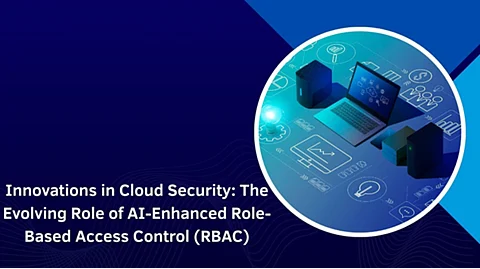

In a world where nearly every organization is embracing cloud computing, security concerns are more pressing than ever. With 94% of enterprises adopting cloud services, it’s no surprise that access control systems have become the backbone of secure digital infrastructure. Arun Kumar Akuthota, in his insightful article, delves deep into the innovations in Role-Based Access Control (RBAC) and how it is transforming cloud security governance. The article emphasizes how RBAC has evolved beyond its traditional form, integrating artificial intelligence (AI) and machine learning (ML) to mitigate security risks, optimize role management, and ensure compliance in cloud environments.
The increasing complexity of cloud systems has driven the need for advanced security frameworks. AI-powered RBAC systems are transforming traditional access management by leveraging machine learning to detect unusual patterns and potential breaches. Organizations using AI-enhanced RBAC frameworks report a 94.3% reduction in security incidents. These systems continuously learn and adapt, improving threat detection and optimizing decision-making, allowing security teams to focus on strategic priorities instead of routine access management tasks.
The article highlights the dynamic role definition feature in modern RBAC systems, such as those within SAP Business Technology Platforms (BTP). In today's fast-paced business environments, organizations need to continuously adapt their access control systems to match evolving roles and operational needs. These systems leverage AI and machine learning to process vast data, allowing real-time adjustments to roles based on user attributes and contextual factors. This flexibility is vital for large enterprises, enhancing security, reducing administrative costs, and ensuring that roles and permissions are consistently aligned with the organization's evolving requirements.
As organizations adopt zero-trust security models, integrating RBAC with this architecture enhances cloud security. Zero trust requires constant verification for access requests, complementing RBAC’s granular permissions. This integration enables the enforcement of least privilege access while maintaining operational flexibility. By combining zero trust with AI-driven RBAC, organizations continuously validate user identities and assess risk, improving security without disrupting user experience. This alignment prevents privilege escalation and reduces attack surfaces, strengthening the security posture of enterprises.
AI-enhanced RBAC simplifies compliance and governance by achieving up to 99.99% accuracy in audits, reducing preparation time and resources. Automating compliance monitoring and documentation allows organizations to meet regulatory requirements. Real-time visibility into role assignments and user activities helps administrators track access decisions seamlessly. This is particularly valuable in highly regulated industries, ensuring adherence to data privacy laws and compliance standards. RBAC with AI integration provides a reliable, scalable solution to meet evolving compliance demands.
Behavioral analytics is also instrumental in making contemporary RBAC systems more effective by employing AI to identify anomalies in user behavior, like uncharacteristic login hours or access patterns, that could indicate security breaches. Ongoing monitoring enables the system to detect compromised credentials or insider threats prior to their escalating into full-blown breaches. Coupled with RBAC's fine-grained access control, this results in a multi-layered security solution, guaranteeing only legitimate people access sensitive information. This move towards AI-based behavioral analytics represents a major leap in security risk management.
In the future, the article refers to some growing trends that will define the role of RBAC in cloud security. The opportunity to integrate blockchain technology with RBAC is particularly promising in opening up new capabilities for immutable audit trails and secured data access administration. As enterprises increasingly use decentralized applications and edge computing, the adaptability of RBAC systems will be significant in handling access across varied environments.
In addition, the continued development of AI is foreseen to introduce further benefits to RBAC, specifically in predictive analytics and role automation. With the use of AI, organizations will have the capacity to better predict access requirements, which will lead to more anticipatory security controls and better-optimized role settings.
In summary, Arun Kumar Akuthota's article offers a perspective on the revolutionary transformations occurring in cloud security governance. The combination of AI and RBAC models has profoundly changed the way organizations grant access to users, identify threats, and maintain compliance. As cloud infrastructures continue to change, the importance of RBAC in keeping up with security will only increase. Through the implementation of AI-powered RBAC systems, organizations are achieving not only a more robust security stance but also greater operational efficiency. As AI, zero trust, and blockchain continue to advance, the future of RBAC holds even more promise for cloud security innovation.
